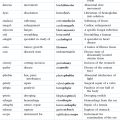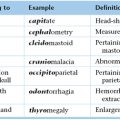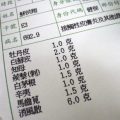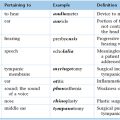Chapter 26
The Focused History and Physical Examination
All we know is still infinitely less than all that still remains unknown.
William Harvey (1578–1657)
General Considerations
The focused history and physical examination constitute a modality that is important to master to explore a patient’s needs and to educate the patient within a short period. It is a great skill and takes time to master. Only after becoming comfortable and confident with the complete history and physical examination can the clinician master the focused history and physical examination, because it relies on extracting the components that are most relevant.
It would be wonderful if clinicians were able to spend 45 minutes to 1 hour with each new patient, but time restraints generally allow the health care provider only about 10 to 15 minutes for each new patient encounter at most. Thus, taking a focused history and performing a focused physical examination are critical skills. It is extremely important to learn to become focused and efficient in documenting a medical history and in performing the physical examination, even though most medical schools do not teach these focused clinical skills.
Always start with open-ended questions and determine why the patient sought medical attention today. At some point in the interview, it would be helpful to ask the patient, “What do you think is going on?” There may be conflict or hidden anxiety, and this question may help the patient to open up to the actual problem. Let the patient speak without interruption, if possible. Always avoid leading or biased questions.
The focused history and physical examination is a complex activity comprising several different skills. It is, however, difficult to teach. Scientific knowledge must be integrated with excellent communication and hypothetical-deductive reasoning to produce a series of pertinent questions about the health of the patient.
As discussed in Chapter 24, Diagnostic Reasoning in Physical Diagnosis, most of the time, the diagnosis is not clear-cut; the history is often not that of a 70-year-old man with a history of hypertension and hypercholesterolemia who presents with crushing chest pain, or that of a 43-year-old obese woman who presents with severe right upper quadrant pain radiating to her right shoulder and nausea. In most cases, there exists uncertainty as to the diagnosis, and the health-care provider must assess the relative chance that the patient is or is not suffering from a particular medical problem. There are elements of uncertainty in almost every case you will see.
In documenting a focused history and performing a focused physical examination, you need to explore the chief complaint, the history of the present illness, the past medical history, medications and allergies, the family history and social history, the occupational history, and the sexual history that are relevant to that specific patient. It is important to recognize that focused does not mean making one diagnosis and skipping the differential diagnosis. In the focused physical examination, you need to examine specifically the body part or system directly involved with the medical problem when there is no time to perform a head-to-toe examination. Remember, however, that other organ systems may need to be evaluated as well. A patient with chest pain requires a full cardiac examination, in addition to examination of the legs for peripheral pulses and edema, carotid artery auscultation and palpation, evaluation of liver size, and evaluation of the retina for related vascular changes.
After your clinical evaluation, tests should be obtained only to corroborate your clinical impression or if the result will in some way affect your decision-making. Remember that common things are common. Uncommon symptoms are more likely to represent an uncommon manifestation associated with a common condition than with a totally uncommon illness.
Illustrative Case
The History of Mr. Roger Stern
Now consider as an example the case of Mr. Roger Stern. Mr. Stern is a 29-year-old man who has come to the emergency room with a chief complaint of “diarrhea and abdominal pain.” What possible diagnoses are you thinking about? What pathologic conditions may be involved? Acute problems? Chronic problems? Some possibilities include genetic disorders, infectious diseases, diseases of immunity, neoplastic diseases, environmental problems, nutritional pathologic processes, vascular disorders, or traumatic conditions (Video 26-1).
Now try to narrow down the possible diagnoses by starting the interview:
Where is the pain in your abdomen?
Right here (pointing to his lower abdomen).
How long have you been having the abdominal pain?
I have been having diarrhea and abdominal pain for the past 3 months.
What was the reason you came in today?
I saw some blood mixed in the stools, and I got very scared.
I don’t really know … perhaps anxiety?
Has there been a change in your life that has created more anxiety?
I guess my job has been rather stressful. I don’t get along well with my bosses.
On a scale of 1 to 10, with 10 being the worst, how would you describe the pain?
I guess the pain is about 5 to 7.
How does the pain affect your lifestyle?
I do go to work, but it’s tough getting up all the time to go to the bathroom and making excuses.
Have you noticed that the pain is worse when you’re hungry or after meals?
No, it just comes and goes and is not related to eating.
Now let’s talk about the diarrhea. Can you describe it for me?
The stool is very loose and sometimes watery. And today there was blood in it.
Was there blood in the toilet bowl?
No. It was kind of wrapped with the stool.
How many times did you see blood with your stool?
Yes, often. It’s kind of stringy.
About how many bowel movements do you have a day?
About 8 to 10 for the past week.
No. [pause] Doc, do you think I have cancer?
Have you noticed that milk or milk products make the diarrhea worse?
Have you noticed that wheat, oat, barley, or rye products make the diarrhea worse?
No. I love bread and wheat products. They don’t seem to make things worse.
Not really. Maybe one beer over the weekend at most.
Have you had abdominal pain in the past?
I first noticed abdominal pain with watery diarrhea about 15 months ago.
I was traveling with a friend to Central America.
My friend gave me some Pepto-Bismol and Imodium for the pain and diarrhea.
The pain persisted on and off for about 3 weeks and then disappeared.
Do you take other medications?
No. I have been in good health otherwise. I have no other problems.
Have you had other episodes of abdominal pain?
Have you seen any doctor about this problem?
Yes, I saw a local doc about 3 weeks ago who gave me some antibiotic for it.
Do you remember the name of the antibiotic?
No. In fact, it seemed to make it worse, so I stopped taking it after 5 or 6 days.
I think okay, but recently I’m not too hungry because of the abdominal pain and diarrhea.
Has there been any change in your weight?
I’ve lost maybe about 5 pounds in the past month.
Does anyone else in your family have a similar problem?
Tell me about your parents’ health.
I am sorry to hear about your father.
Yeah, I have an older brother who’s fine. He’s 31.
Do you use any recreational drugs?
Marijuana about once or twice a month.
Are your partners male, female, or both?
Eyes … yeah. When I was 19 years old in college, I had iritis in my right eye.
Did you ever see a doctor about it?
In summary, Mr. Stern is a 29-year-old man who is seeking evaluation for a history of abdominal pain and diarrhea. The patient describes the first episode of pain about 15 months ago while on a trip in Central America. The pain disappeared and returned about 3 months ago. Today, the patient noticed red blood mixed with his stool and has sought medical evaluation. The patient describes the pain as crampy in nature and is relieved with defecation. He feels the pain mostly in his lower abdomen. He describes the pain as about a 5 or 7 on a scale of 10. He also has a bloating sensation in his abdomen most of the time. He does not have any nausea or vomiting. He denies being febrile. He has had a 5-pound weight loss in the past month. He saw a local physician about 3 weeks ago who gave him some antibiotic, which seemed to make things worse, and so he stopped taking the medication after 5 or 6 days. The symptoms have still persisted. He has had about 8 to 10 bowel movements a day for the past week. There has been some stringy mucus mixed in with the stool. The stools do not float. There is no lactose sensitivity. There is no apparent sensitivity to gluten (wheat, oat, barley, or rye products).
He is not taking any medications. He does not have any known allergies.
He is single and lives with his girlfriend of 8 months and always uses condoms for sexual protection. He uses marijuana about once or twice a month. He does not use any other recreational drugs. He works now as a legal clerk.
His mother is 54 years old and is in good health. His father died at age 56 from a sudden heart attack about 15 months ago. He has an older brother, age 31, who is in good health.
His review of systems is pertinent in that when he was 19 years old, he had iritis in his right eye, which was treated with steroids for 4 weeks and sunglasses. It improved in about 3 weeks. He also has a history of low back pain, which he attributes to bowling. The pain is intermittent and started when he was about 21 years old.
Diagnostic Evaluation
In speaking with Mr. Stern, there appear to be several important diagnoses. Inflammatory bowel disease (IBD), irritable bowel syndrome, traveler’s diarrhea, pseudomembranous colitis, celiac disease, and giardiasis are certainly in the differential diagnosis. The history of iritis and low back pain makes the diagnosis of IBD a strong possibility. IBD, consisting of Crohn’s disease and ulcerative colitis, is very common, with an annual incidence in the United States of approximately 3 to 10 new cases per 100,000 people. Extraintestinal inflammatory manifestations are common. Ocular manifestations occur in 5% of patients with IBD, and ankylosing spondylitis, in 5% to 10%. The most common extraintestinal manifestation is a peripheral, large-joint, asymmetric, nondeforming arthritis; this occurs in 20% of patients with IBD. Mr. Stern does not have a history of this type of arthritis. Genetic disorders seem unlikely, inasmuch as the appearance of this patient’s problem started at age 27 or 28. Viral or bacterial gastroenteritis also seems unlikely, because of the apparent chronicity of the problem despite the travel history 15 months ago to Central America. Salmonella, Shigella, and Campylobacter enterocolitis are generally associated also with fever and are short-lived infections, lasting from 3 to 6 days, although Campylobacter infection may cause a more protracted diarrheal illness. Antibiotic-associated colitis (pseudomembranous colitis) is unlikely, inasmuch as most of the symptoms antedated the use of the recently prescribed antibiotics. Colorectal carcinoma is unlikely because of the history and this patient’s age. Giardiasis is still a possibility, but it is low on the list of differential diagnoses: Most patients with giardiasis exhibit a malabsorptive diarrhea, and lactase deficiency occurs frequently, in 20% to 24% of patients; Mr. Stern denies milk intolerance. The regular use of condoms by a man who has sex only with women makes the diarrheal illness less likely to be related to acquired immune deficiency syndrome (AIDS). Diarrheal illnesses and malabsorptive syndromes can occur in as many at 50% of AIDS patients. Malabsorption syndromes are common. They are characterized by defective adsorption of fats, fat-soluble and other vitamins, carbohydrates, electrolytes, minerals, and water. Although chronic diarrhea and flatulence are common in malabsorption syndromes, the hallmark of malabsorption is excessive fecal fat content, or steatorrhea. Mr. Stern denies floating stools, a symptom of steatorrhea. Celiac disease is a chronic disease, but this patient’s lack of sensitivity to gluten makes this diagnosis less likely. Vascular disorders are unlikely because of the age of the patient and the lack of other medical conditions.
The Physical Examination of Mr. Roger Stern
On the basis of the history, the focused physical examination of Mr. Stern should include the following (Video 26-2):
• General appearance for signs of wasting, jaundice
• Inspection of skin for rashes
• Inspection of the mouth for oral ulcers
• Light palpation of the abdomen in all four quadrants after auscultation
• Deep palpation of all four quadrants
After performing these physical examination maneuvers, you should be able to narrow down or confirm the most likely diagnosis. Always obtain as much information as possible. You can always narrow down your differential diagnosis.
It is a difficult task to obtain a good focused history and perform a good focused physical examination. It requires an excellent knowledge of physical diagnosis, pathophysiologic processes, and epidemiologic data to hone in on the important aspects of the patient’s medical problem.
Bibliography
Alaedidni A, Green PH. Narrative review: celiac disease: understanding a complex disease. Ann Intern Med. 2005;142:289.
Bowen JL. Educational strategies to promote clinical diagnostic reasoning. N Engl J Med. 2006;355:2217.
Bradley CP. Can we avoid bias? BMJ. 2005;330:784.
Drossman DA. Functional abdominal pain syndrome. Clin Gastroenterol Hepatol. 2004;2:353.
Gandhi TK, et al. Missed and delayed diagnoses in the ambulatory setting: a study of closed malpractice claims. Ann Intern Med. 2006;145:488.
Heller RF, et al. GPs’ and physicians’ interpretation of risks, benefits and diagnostic test results. Fam Pract. 2004;21:155.
Jason H. Becoming a truly helpful teacher: considerably more challenging, and potentially more fun, than merely doing business as usual. Adv Physiol Educ. 2007;31:312.
Lau AYS, Coiera EW. Do people experience cognitive biases while searching for information? J Am Med Inform Assoc. 2007;14:599.
Lembo A, Ameen VZ, Drossman DA. Irritable bowel syndrome: toward an understanding of severity. Clin Gastroenterol Hepatol. 2005;3:717.
Manning-Dimmitt LL, Dimmitt SG, Wilson GR. Diagnosis of gastrointestinal bleeding in adults. Am Fam Phys. 2005;71:1339.
Peltier D, et al. Teaching focused histories and physical exams in ambulatory care: a multi-institutional randomized trial. Teach Learn Med. 2007;19:244.
Westbrook JI, Gosling AS, Coiera EW. The impact of an online evidence system on confidence in decision making in a controlled setting. Med Decis Making. 2005;25:178.






